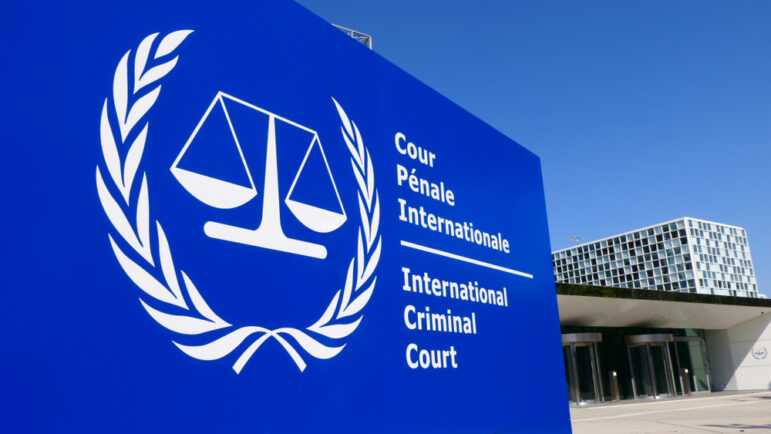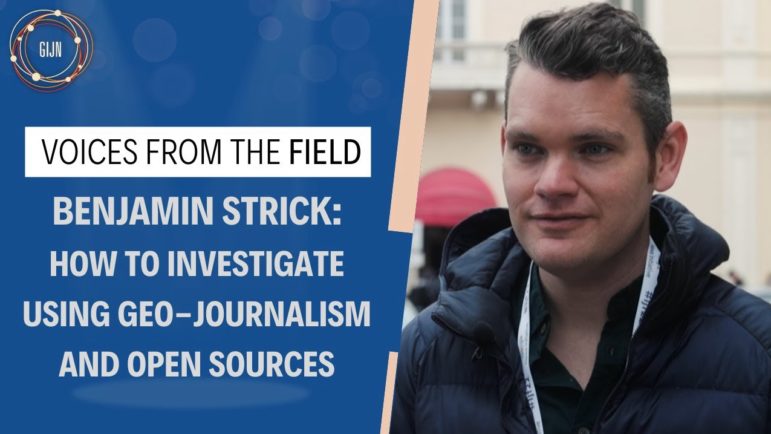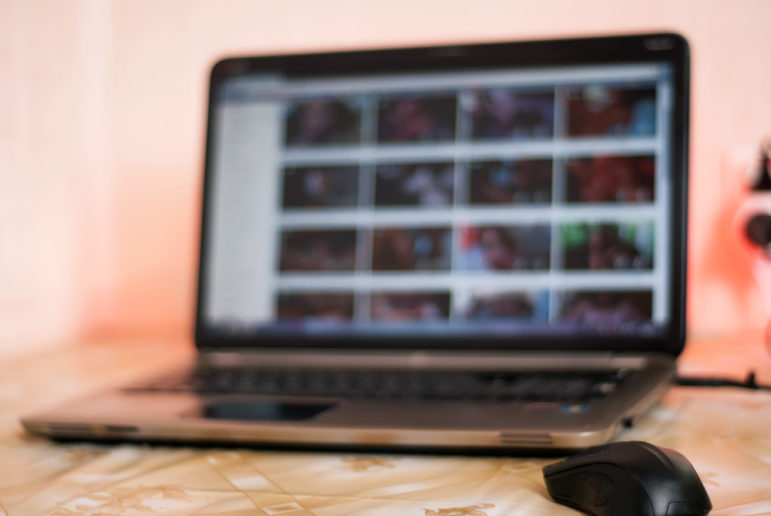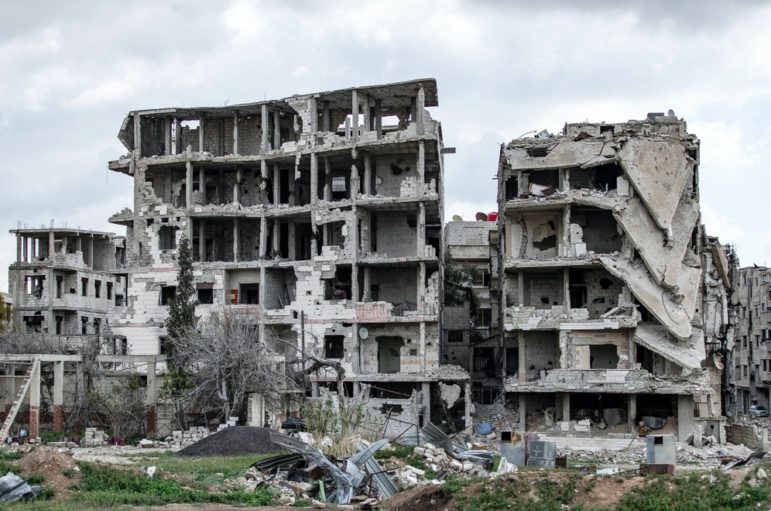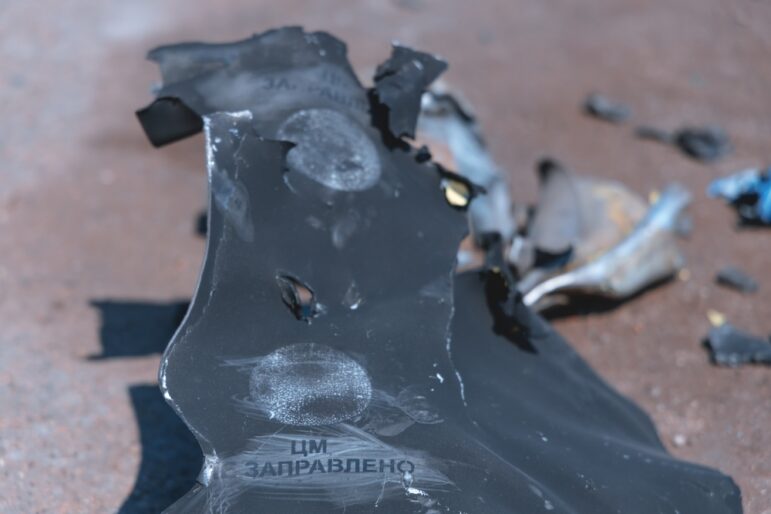

Fragment of a Russian missile left after strikng a building in Dnipro, Ukraine, June 2022. Image: Shutterstock
Tipsheet for Investigative Journalists on War Crimes and Open Source Research
Editor’s Note: Amid wars in Europe, Africa, and the Middle East, GIJN has created this tipsheet for journalists about understanding war crimes and attacks on civilians. It is excerpted from a longer chapter by Sam Dubberley and Başak Çalı that is part of the GIJN Reporter’s Guide to Investigating War Crimes.
Pros and Cons of Open Source Research
Advantages
Open source information can be a valuable way to establish facts when investigating violations of international humanitarian law or international crimes — if used along with other sources, such as site visits and interviews. Journalists can use open source information to look for a number of vital details, including:
- Military units and activity. Are uniformed military personnel visible in videos or photographs? Are uniforms, emblems, or equipment recognizable?
- Possible military targets. Once the location of the military operation is identified, open source information can help identify if possible military targets were at, or closely adjacent to, the location of an attack. With the right skills, it is possible to identify military targets using mapping tools and high-resolution satellite imagery to check for military compounds or installations, as well as identify large military vehicles such as trucks, tanks, other armored vehicles, and aircraft.
- Civilian activity. Where has the attack taken place — in a residential neighborhood, an evacuation point, an apartment building, a hospital, or elsewhere? Are civilians visible, such as children or older people? What are they doing? Can you count the number of civilians, dead or alive, with open source information?
- Weapons identification. Victims of attacks who have filmed the scene can often post images of the remnants of weapons or other military materiel online. These can include shrapnel from missiles or rockets, bullet casings, cluster submunitions, ordnance packaging, and so on. Identifying these weapons can help in an overall determination as to the proportionality of an attack or if it was indiscriminate.
- Injuries and forensic pathology. Determining causes of death with open source information is notoriously difficult, and must be done carefully, and only by referring to experts in forensic pathology. While what these experts can ascertain from a video is limited, but it can help, for example, to identify signs of torture or establish a range of possibilities for cause of death, or rule out other possibilities. Any analysis here, however, must be approached with caution and used, in the main, to corroborate other information that the journalist has at hand.
- The prior state of the attack site. Open source information can help determine if there was known civilian activity or information that military commanders should have been aware of prior to the military activity, or if the location was being used for a military purpose before the attack. For example, historical satellite imagery enabled journalists to identify the word “Дети”(“Children”) painted outside the Drama Theater in Mariupol, Ukraine, in the days before an airstrike destroyed the building sheltering hundreds of civilians in March 2022. This attack has been decried by some international human rights groups as a likely war crime.

Russia’s bombing of a drama theater in Mariupol, Ukraine (seen here with red roof, two days before the attack), which was used to shelter children, prompted war crimes accusations from organizations like Amnesty International. Image: Screenshot, The Moscow Times
Drawbacks
Journalists should be cautious when using open source information to investigate violations of international humanitarian law or international crimes. Even though open source techniques are now seen as a compelling storytelling technique in their own right, researchers should avoid relying solely upon them and instead consider these techniques as just one part of the larger investigative process. To make the best use of open source information, journalists should collaborate with a broad range of actors, including, on-site investigators, weapons experts, forensic pathologists, and lawyers, to name just a few.
Journalists must also recognize the limitations of open source investigations. For example, these techniques are of limited use in establishing what type of information military personnel had available to them at the time they decided to attack. Likewise, they’re of little to no help in understanding what type of military advantage was pursued with one or a series of targeting operations, which are necessary elements when proving certain types of international crimes.
In addition, reporters must consider the weighty legal or ethical reasons that may exist for not publishing open source information. The use of such information publicly may be banned outright by international humanitarian law (such as the use of images and videos that openly identify prisoners of war) or there may be concerns regarding freedom from inhuman or degrading treatment, or individuals’ right to privacy. Ethical considerations could include the risk to the captured individuals, for instance if their likenesses are uploaded or depicted in open source information if the content is then amplified by a news organization. Journalists should also remember that, even in an armed conflict, copyright considerations may apply if the content is used in reporting.
Aside from these limitations on open source information in general, there are also technical limitations.
Image quality. Photographs and video shared on social media have been compressed from their original quality. This means, for instance, it may be difficult if not impossible to verify logos or letterings on uniforms of a military unit, or to distinguish between weapons and, say, farm tools.
False analysis. Geospatial analysis is an area of open source research that requires training to conduct properly. It is also an area where a little bit of knowledge can lead to false conclusions. It is, therefore, important that investigators understand the limitations of what is visible in a satellite image and be able to analyze what they see correctly. For example, it is important for journalists to understand that disturbed earth seen from space does not automatically equate to evidence of a mass grave. Earth can be moved for many reasons, and craters can be created by other incidents prior to an alleged attack.

Using satellite imagery from Planet Inc., GIJN member Texty identified masses of train cars (red), trucks (blue), and freight ships (green), possibly smuggling stolen grain out of Ukraine by Russia. Image: Screenshot, Texty via Planet Inc.
Tips and Tools
Mindset is Bigger than Toolset
While below we outline tips and tools for using open source platforms for investigations, one of the biggest challenges of using open source information is that the tools and methods for searching and verifying can change very quickly. This is predominantly because a lot of the tools are free, and are provided by the social media platforms themselves. More important, therefore, than relying on the tools, is having the mindset of an open source investigator. That means being creative in finding solutions and constantly learning and thinking about new ways of doing research or obtaining information. Without this mindset, the skills of the open source researcher will grow stale quickly.
Searching for Content
Each social media platform is popular in different parts of the world. Therefore, a key first step is to understand what kinds of open source information are likely to be shared, and how the search functions of the local preferred platforms work. For instance, in the Ukraine conflict, Telegram has been by far the most important platform on which to discover text, videos, and photographs posted by witnesses, military personnel, and government officials. Relevant information on that war as well as individual incidents can be found using a combination of English, Ukrainian, and Russian keywords. Cities and towns across Ukraine have established Telegram channels that function as aggregators where local residents post content to be shared. (Note: Some of these local channels also have been flagged as bots or potential Russian disinformation sites.) By identifying these aggregator channels, journalists have been able to collect and verify large amounts of videos and photographs showing killed or injured civilians, destroyed civilian infrastructure, and remnants of munitions.
Collecting Content
Considering the volume of photographs and videos now posted to social media from conflicts across the world, ensuring a robust way of collecting and analyzing information is critical. Failure to do this can very quickly lead to confusion or feeling overwhelmed. While there are content management systems designed for open source investigations such as Truly Media by Deutsche Welle or Uwazi by HuriDocs, a lot can be done with a well-designed Excel spreadsheet or Google. These allow the researcher to more easily sort the data and perform analysis on individual items, which can allow determinations to be made about weapons, patterns of violations, and so on.
Archiving Material
Videos and photos depicting war crimes are often, by their nature, violent, disturbing, or distressing. So it is no surprise that these can quickly disappear from the platforms on which they were posted — for a variety of reasons. (Most social media platforms’ terms of service prohibit sharing of violent or disturbing content, which means offending posts are often removed by the platform itself.) It is therefore essential that content is preserved promptly when researching incidents. Tools such as the Internet Archive or archive.today are good for preserving photographs or text posted to websites, and have the advantage that they are then saved for other researchers as well. Videos, however, currently require the researcher to take preservation into their own hands. Those who feel comfortable with Terminal command-line interfaces can use an open source tool named YouTube-DL to preserve video. If an organization is using a lot of open source video, it might be worthwhile to build a user interface for YouTube-DL that preserves content on the organization’s own servers for security reasons. (Note: YouTube-DL has faced shutdown issues in the past due to alleged copyright complaints and recently a German court ruled its website host could be liable for content rights violations.)
Verification of Open Source Information
The failure to verify open source content comes at a very high risk — and is not recommended. That risk grows even higher when making claims about the most serious of charges, such as violations of international humanitarian law or war crimes. Much has been written elsewhere about the processes of reverse image search, checking metadata, geolocation, and chronolocation, which are all key for the verification process and apply here. But investigating the activities of warring parties requires more robust verification. For example, geolocated, user-generated tools that map military installations such as Open Street Map or Wikimapia can help identify if a documented attack with civilian casualties occurred close to a legitimate military target. Camopedia describes itself as a database of “major military and paramilitary camouflage patterns that have been in use around the world since the beginning of the 20th century” and is essential for verifying whether military uniforms seen in a piece of open source information are consistent with the military of the country they are supposed to represent.
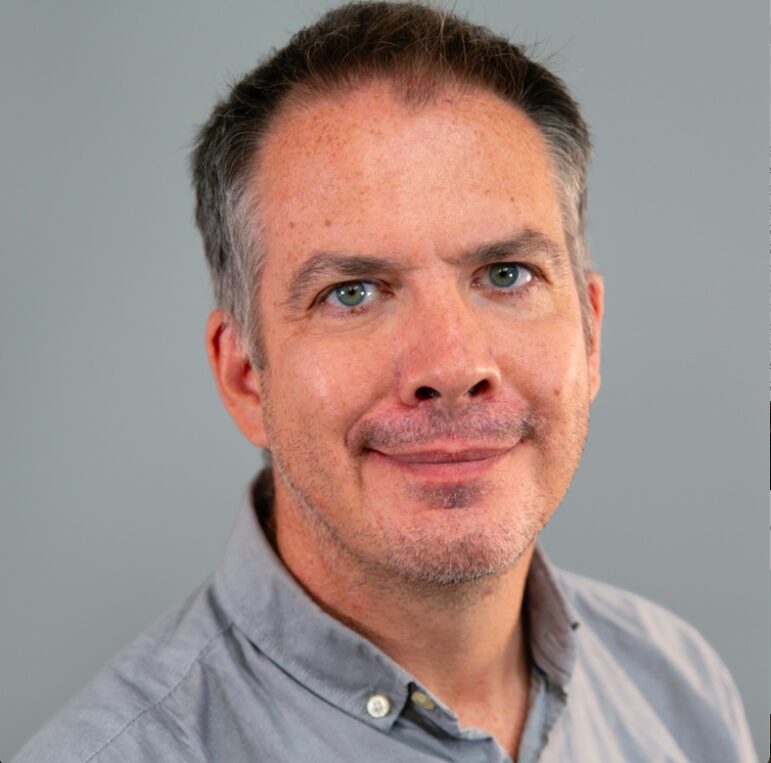 Sam Dubberley is the managing director of the Digital Investigations Lab at Human Rights Watch. Prior to joining HRW, Sam was the head of the Evidence Lab at Amnesty International where he conducted and led on a wide range of open source research for Amnesty International, including investigative collaborations with several media organisations, including CNN and NHK. Sam is a fellow of the Human Rights Centre at the University of Essex and has been a fellow of the Tow Center for Digital Journalism at Colombia University. He is the co-editor of the book ‘Digital Witness: Using Open Source Information for Human Rights Investigation, Documentation, and Accountability’ published by Oxford University Press in 2020.
Sam Dubberley is the managing director of the Digital Investigations Lab at Human Rights Watch. Prior to joining HRW, Sam was the head of the Evidence Lab at Amnesty International where he conducted and led on a wide range of open source research for Amnesty International, including investigative collaborations with several media organisations, including CNN and NHK. Sam is a fellow of the Human Rights Centre at the University of Essex and has been a fellow of the Tow Center for Digital Journalism at Colombia University. He is the co-editor of the book ‘Digital Witness: Using Open Source Information for Human Rights Investigation, Documentation, and Accountability’ published by Oxford University Press in 2020.
 Başak Çalı is Professor of International Law at the Hertie School and Co-Director of the School’s Centre for Fundamental Rights. She is an expert in international law and institutions, international human rights law, and policy. She has authored publications on theories of international law, the relationship between international law and domestic law, standards of review in international law, interpretation of human rights law, legitimacy of human rights courts, and implementation of human rights judgments. She is the Chair of European Implementation Network and a Fellow of the Human Rights Centre of the University of Essex. She has acted as a Council of Europe expert on the European Convention on Human Rights since 2002. She has extensive experience in training members of the judiciary and lawyers across Europe in the field of human rights law. She received her PhD in International Law from the University of Essex in 2003.
Başak Çalı is Professor of International Law at the Hertie School and Co-Director of the School’s Centre for Fundamental Rights. She is an expert in international law and institutions, international human rights law, and policy. She has authored publications on theories of international law, the relationship between international law and domestic law, standards of review in international law, interpretation of human rights law, legitimacy of human rights courts, and implementation of human rights judgments. She is the Chair of European Implementation Network and a Fellow of the Human Rights Centre of the University of Essex. She has acted as a Council of Europe expert on the European Convention on Human Rights since 2002. She has extensive experience in training members of the judiciary and lawyers across Europe in the field of human rights law. She received her PhD in International Law from the University of Essex in 2003.



